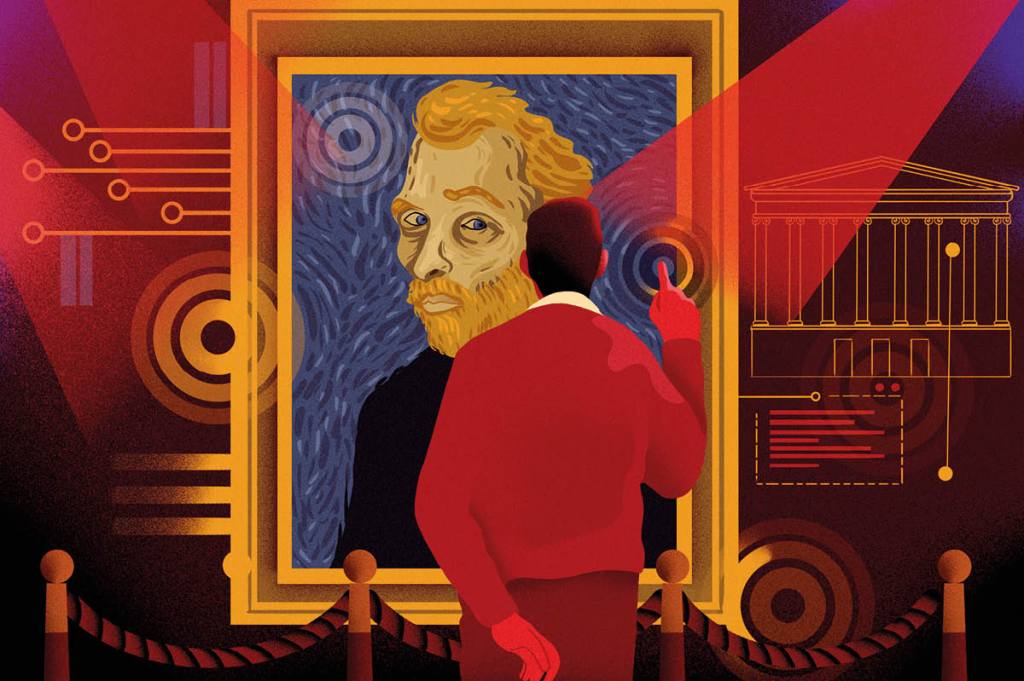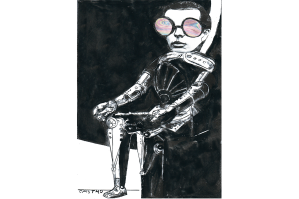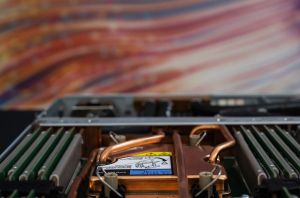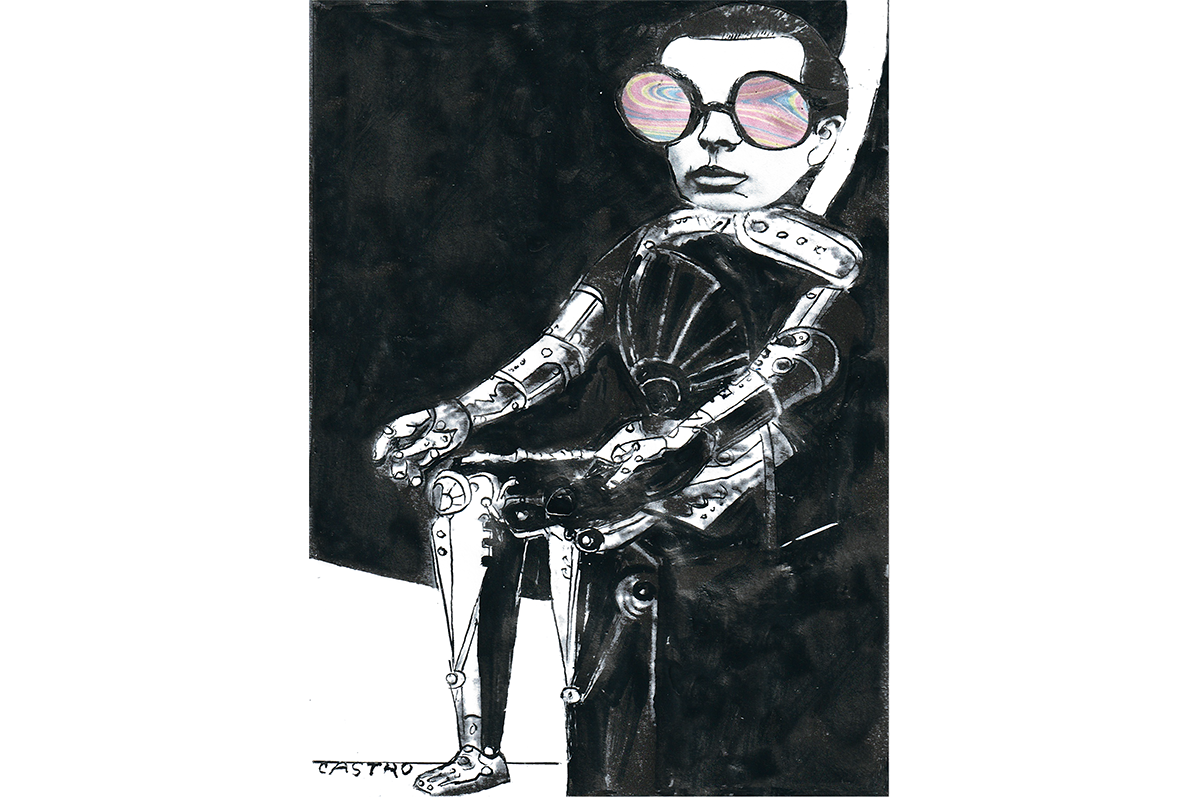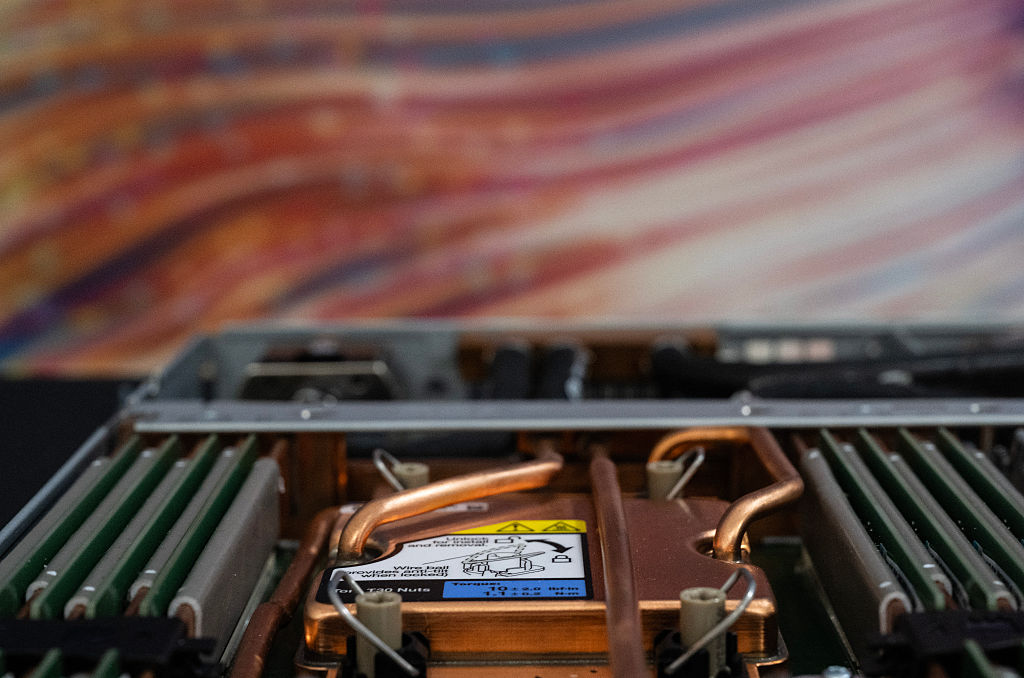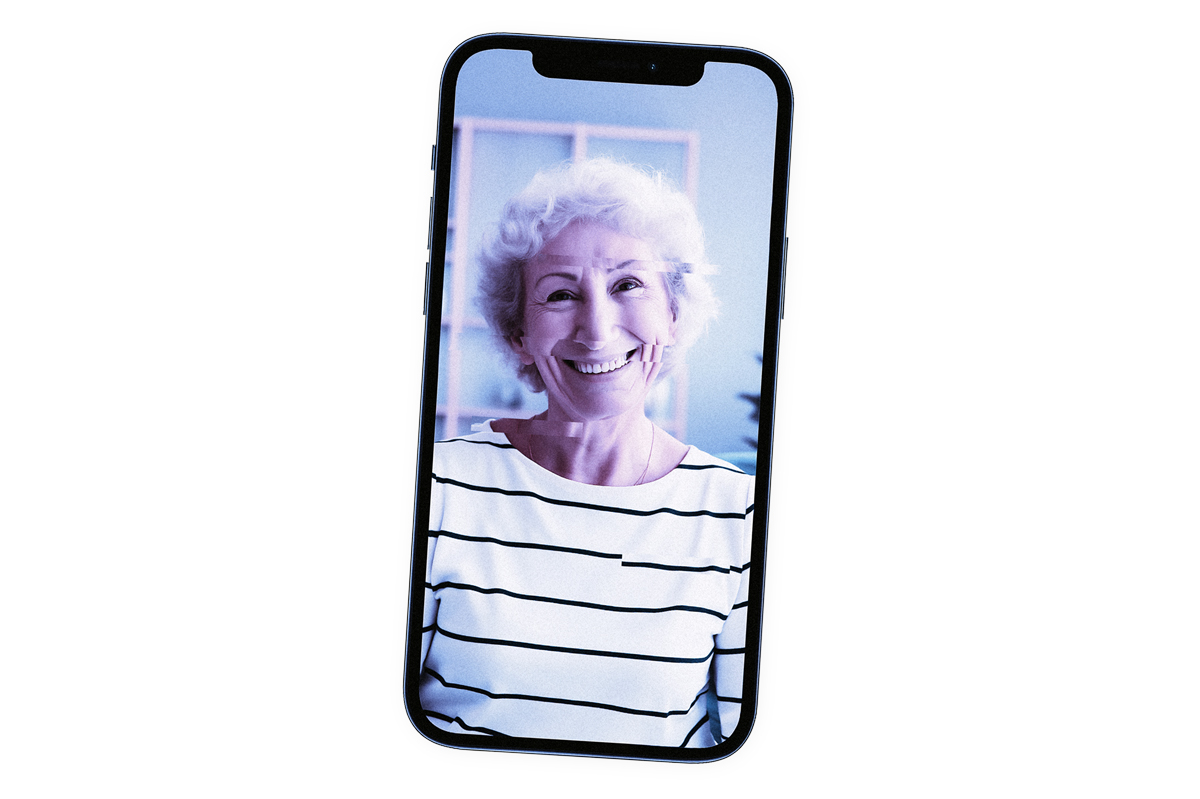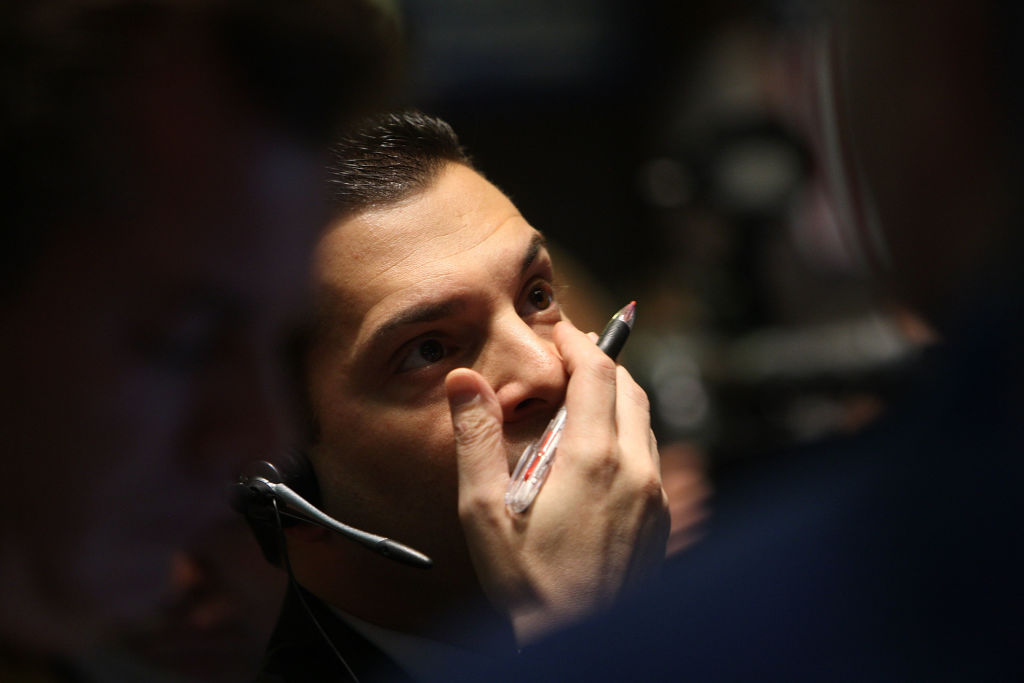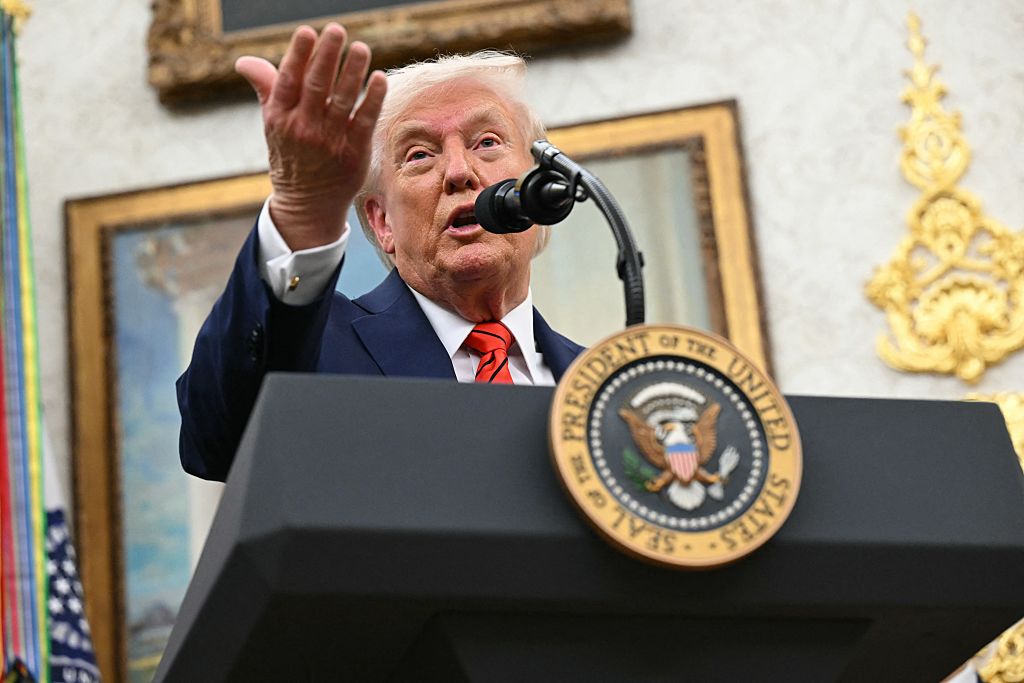“I grew up wanting to be an astronaut,” Robert Stein, the National Gallery of Art’s recently appointed chief information officer, tells me. “I studied electrical engineering, and I got a job doing high-performance computing. And then one day, I did a project with an art museum, and I thought, ‘Wait a second, this is an area of the world that needs more technology in order to connect more people together.’ And the rest was kind of downhill from there.”
The National Gallery of Art in Washington, DC — the NGA — is now ranked the most popular art museum in America. Recently, it has quietly but steadily undergone a major culture shift, avoiding the backroom board dramas and general inscrutability that often defines its peers, and hoping to better understand and serve its established audiences and draw in new visitors. This involves thinking about the future of museum collections and the nature and design of their exhibits. And this is where Stein comes in.
“I’ve worked in a number of museums over the years, in a number of roles,” he explains, “and I’ve always been connected to the way that museums have these really distinctive, creative thinkers and experts in their respective fields, and yet somehow museums manage to pool all of those talents together, and create experiences for audiences with works of art that cause us to think about things like NFTs, or the French Revolution, or American history, and so on. And I think my role is using this office to figure out how technology can be applied across all of these different areas to make them work together, whether that’s in places such as conservation or with our digital lab and social media folks who are such a part of what it means to go to a museum today, as opposed to how things were, say, twenty-five years ago.”
Stein is very much aware of the fact that the NGA — which does not charge for admission or offer general membership — doesn’t operate like most other art museums; he sees this as a both a challenge and an opportunity. “One of the privileges of having a national art museum is that you can walk right off the Mall and into an art gallery,” he observes. “The lack of a membership database makes it more challenging, and some other museums have this challenge as well, when we think about reaching audiences that have never been to the National Gallery. Most of the time a museum wants to reach the audience that has already [visited], and use that to flip the data set in order to reach those who haven’t been there. We have to think about building experiences or reaching people in a different way.”
In order to do this, Stein and his colleagues are trying to think creatively about how they use the tools available to them. “Some of the challenge from a technology perspective is about how the National Gallery of Art takes care of and structures all of its data about art and creativity, in a way that our educators and curators and conservators can access and then activate for the general public,” he explains. “That requires a ton of systems architecture, data management and data analysis, and knowing that your audience is not just some monolithic population: it’s individuals, and individuals who have different priorities, and preferences, and needs.” As Stein suggests, the challenge is to offer something that places the audience first, something he calls “fun to get into… learning more about what the Gallery is already doing, and what we need to be doing in the future.”
When asked how one might go about doing that with such a varied collection of data points, Stein chuckles. “Think of the challenge of building a computer system that can capture and store what you know about potentially every created thing, from coins, to forty-foot-long paintings, to bronze and marble sculptures. When I first got into the field of art museums, I had come from an area where I dealt with terabyte data sets and I thought, ‘OK, this is going to be easy, they’ve only got 150,000 things.’ But each one of those 150,000 things has so much depth to it, it’s not just categorical information about what is this, who made it, what is [it] made of, where did it come from, and who told me that, it’s also material qualities and visual qualities.”
The NGA has been taking a measured, “both/and” approach with respect to the objects it adds to its collections. It continues to add the sorts of things one traditionally associates with art museums of this type — Old Masters and Impressionists — but it’s also acquiring more modern and contemporary works. With the demographic makeup of the United States undergoing a significant change, it’s only to be expected that the national art museum needs to reflect the changing face of the nation.
“It’s not a zero-sum game,” Stein explains, “and to be fair, we’ve not been balanced for many years. Nor has the broader art world really featured the creativity and artistry of many different kinds of people, including black artists and women artists, for example. But that doesn’t mean that the da Vinci has to go into the basement.”
“What it does mean,” he continues, “is that the museum has some agency in telling many different stories, and a diversity of stories that people can connect to. And the artists reflected in the museum should reflect that diversity as well, because art is this portal where I can look through the artist’s perspective on what it was like in the early twentieth century for example. Or I can look at the work of Thornton Dial, looking at black sharecroppers in Alabama: I’ll never have that experience, but I can learn through his art.”
How to draw in the visitor is a key focus of the reimagining currently underway at the NGA. “There are very few better experiences that you can have in an art museum than walking though it with somebody that knows its collection well,” says Stein, “whether it’s a curator or a conservator or a director, because they can help you to unpack the stories of the art that cannot be discerned from simply reading a label. And that unpacking, that storytelling, becomes a whole bunch of hooks that can catch your attention.”
I counter that a significant challenge, at least when it comes to public opinion, has been of the art museum as a kind of temple for the elite. Stein points to content that the NGA has begun to put out in recent years relating to its collections and work with them, an undertaking which intensified during the pandemic but continues today across social media platforms. Now, in combination with new projects such as evening events at the museum, they continue these efforts to build community engagement, “But you’re right,” he admits, “we’re kind of facing an uphill battle in that a large segment of our potential audience either thinks, ‘No, art’s not for me,’ or, ‘This isn’t necessarily my idea of fun.’
“Addressing this comes back to the teamwork that exists across the museum,” Stein explains, “because this is a team sport. [We] are also thinking about our audiences: where are they coming from, what are they doing, what are they paying attention to? So we work closely with our digital production teams who create the content and the media to take the images of these amazing works of art that make you think, ‘I want to see that in person.’”
Stein believes that planning for the future will involve making creative use of both existing methods, both analog and digital, alongside emerging technologies that can be put to unexpected uses.
“I don’t know that there’s a single answer to the question of, ‘What works?’” Stein explains. “For some, I do think that mobile tours work; they offer a way to better access the information that’s in front of you. For others, it’s a bit more direct. Through in-person tours [people] can have the experience of learning how to understand an object for themselves. I think that’s a moment where you can tell people that you don’t have to like everything that’s hung on the wall of an art gallery, and that simple act of permission-giving can often open a door.”
“A lot of us are tracking the world of AI these days,” he notes, looking further ahead, “and while these AIs are getting good at generating images, they’re also getting good at understanding what the image depicts. It’s potentially really helpful, because when a person who’s not educated in art history comes to the museum and finds a work of art that they like, when they go to describe it they’ll describe what they’re seeing, but they might not know the art-historical terms for that picture. So we’re really interested in AI — it might help us describe those objects visually and make matches for how people are encountering works of art. You can really turn AI into something much more meaningful, connecting images to the history that surrounded that artist and that object at the time.”
The effort to balance what makes the NGA the unique museum that it has been, while making certain that it continues to fulfill its role as the nation’s art museum, is a difficult one, particularly given how differently the museum operates as compared to similar institutions. “Luckily,” Stein says, “it’s a virtuous circle. The upside is, if we do a better job of unlocking these kinds of experiences with art and artists, then more people get connected and engaged with the National Gallery of Art, and hopefully their lives are enriched by experiencing art in that way. That is the best justification, that we are enriching the life of the nation in the work that we do. And if it takes data to do that, to meet needs that we currently don’t know about, we should absolutely dive deep into that pool.”
This article is taken from The Spectator’s June 2023 World edition.



